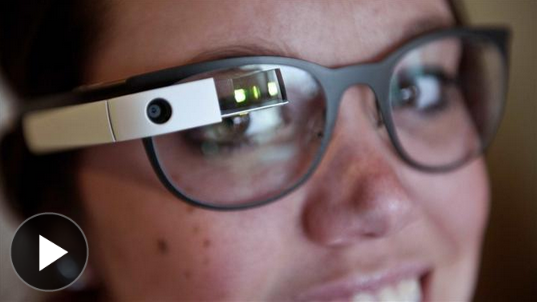Google Glass Gets a New Direction

Google Inc. is halting individual sales of its wearable Glass and borrowing a page from Apple Inc. ’s playbook by developing the next generation of the controversial device out of the limelight that hurt the first version.
Glass is moving from the Google X research lab to be a standalone unit. Glass chief Ivy Ross will report to Tony Fadell, the chief executive of smart-home device maker Nest Labs who will oversee Glass and provide strategy guidance to Ms. Ross.
The changes usher in a new strategy for Glass in which it will shun large, public tests of prototypes in favor of the same approach used by Apple and Nest, which develop consumer gadgets in secret and release them as fully finished products.
Google released Glass in 2013 to people who applied to test the Internet-connected eyewear through its Explorer program.
It sold the device to the public in mid-2014, but sales were small amid complaints about privacy, technical shortcomings and a lack of obvious uses.
Google is ending the Explorer program and individuals won’t be able to buy the gadget after Jan. 19. Google will sell it to companies and developers for work applications.
A new version of the device will be available sometime this year, Google said. The next device won’t be sold to early testers. Instead, the company plans to release a final version only when Ms. Ross and Mr. Fadell think it is ready.
“There’s no reason to throw it out there again,” said Ms. Ross, a former marketing executive recruited to help Glass win wider acceptance. “Now it’s time to hunker down.”
The updated gadget will be cheaper and have longer battery life, improved sound quality and a better display,
Ms. Ross said. Google plans to tackle the social stigma problem by pairing the device with more familiar types of eyewear, she added.
The more secretive approach differs from Google’s usual pattern. As a mainly software company, Google likes to release early versions of its products to a test group, collect their feedback and then quickly update to fix problems. That’s how it rolled out Gmail in 2004.
But that launch-and-iterate approach backfired with Glass, one of the few consumer-hardware devices the company designed and built in-house. The gadget proved more difficult to update than software code running a service like Gmail.
Glass is part of a broader push by Google to expand from its software roots into physical devices that are connected to the Internet. But the company is still grappling with the best way to design and build hardware.
Since Mr. Fadell, an inventor known as the godfather of the iPod, joined Google, the company has been trying to spread Nest’s design approach to other projects. Mr. Fadell’s oversight of Glass is a sign of his growing influence at Google.
Not all Google hardware projects are adopting the same strategy. Google Wednesday said it would begin a public test of its Ara “modular” smartphone in Puerto Rico later this year.
For Ara, Google is using a test because it’s trying to build a marketplace for outside hardware developers to make modules that will perform specific functions of the phone, said Regina Dugan, head of Google’s Advanced Technology and Projects group, which runs Ara. That would be hard without real users, she said.
More people have to be involved to build a new platform like Ara, “so it has to be more open,” Dr. Dugan said. “The risks are greater, but the rewards are too.”
Glass was troubled from its earliest days. The gadget suffered from short battery life, poor sound quality and distorted images under certain conditions.
Releasing the device widely, and charging $1,500, raised expectations and prompted users to consider Glass a finished product, rather than a prototype, said David Lerman, CEO of GuidiGo, which designs guided tours using Glass.
Glass users prompted a privacy backlash by recording video indiscriminately. The device was banned from some bars and movie theaters; users were sometimes called “Glassholes.”
